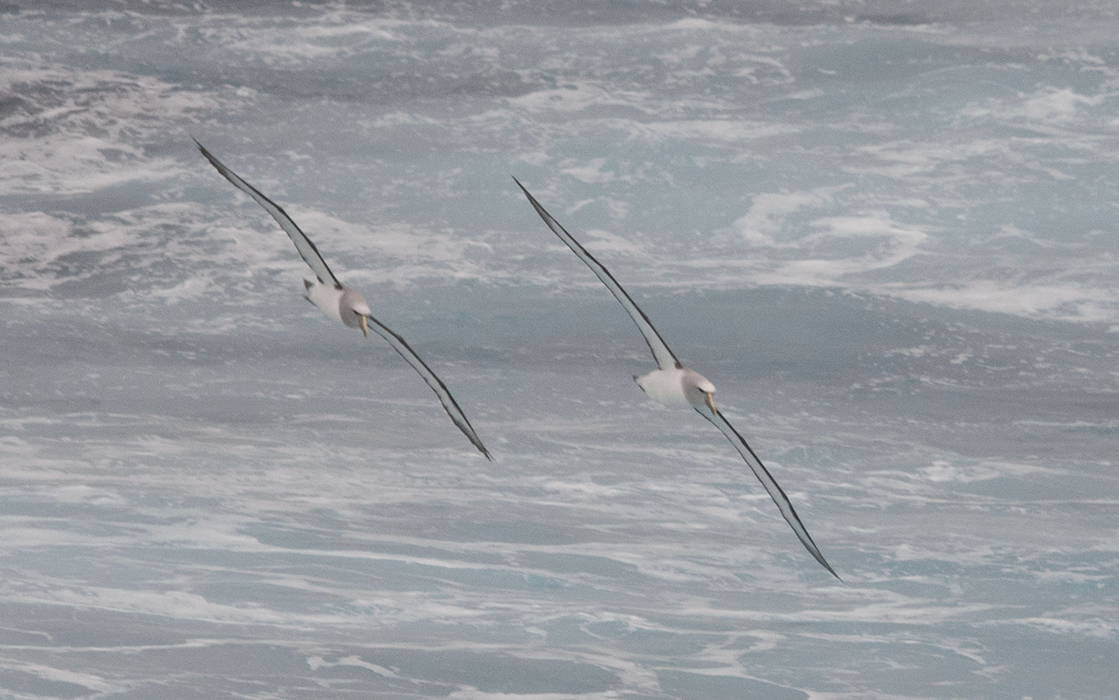Pos: 46°59.85 S, 175°05.60 E
Sea:
7 m
Wind:
W 20 m/s
Weather:
Sunny
Today I will try to probe a little deeper into the world of the amazing
albatross. To my aid I have the fine book A complete
guide to Antarctic wildlife by Hadoram Shirihai.
Quote from page 12: “In the enormous waves of the Southern Ocean, these
massive birds (Great Albatross) appear small, but even in the fiercest of
storms their supremely agile, effortless and relaxed flight is obvious.
Experiencing these birds in such conditions is arguably the ultimate birding
experience.“
It is obvious that my birding career can only go downhill from here. The
biggest swell so far is hitting Araon on the port side and wind gusts are exceeding
20 m/s. Numerous albatrosses of different kind are following the ship now.
The great albatrosses consist of two groups, Wandering albatross and Royal
albatross. Within these subgroups “taxonomy and nomenclature of the seven taxa
of great albatrosses […] are still highly controversial, subject to further study”.
There are also some risks of confusion within the group of small and medium
albatrosses. If any birding expert can help me out here, don´t hesitate to post a
comment.
Chatham or Salvin´s albatross?
Salvin´s or Shy albatross?
Wandering albatross (Anitpodean or Amsterdam)?
Wandering albatross (Tristan or Gibson)?
Campbell or Black-browed albatross?
Wandering albatross (Anitpodean or Amsterdam)?
Sadly, 17 out of 22 species
of albatross are threatened with extinction. The main threat to albatrosses is
death at the end of a hook on a fishing long-line. The Royal Society for the
Protection of Birds runs a campaign to save the albatross.
Definitely Adélie penguin. Not an albatross, but I really like this pic.



























